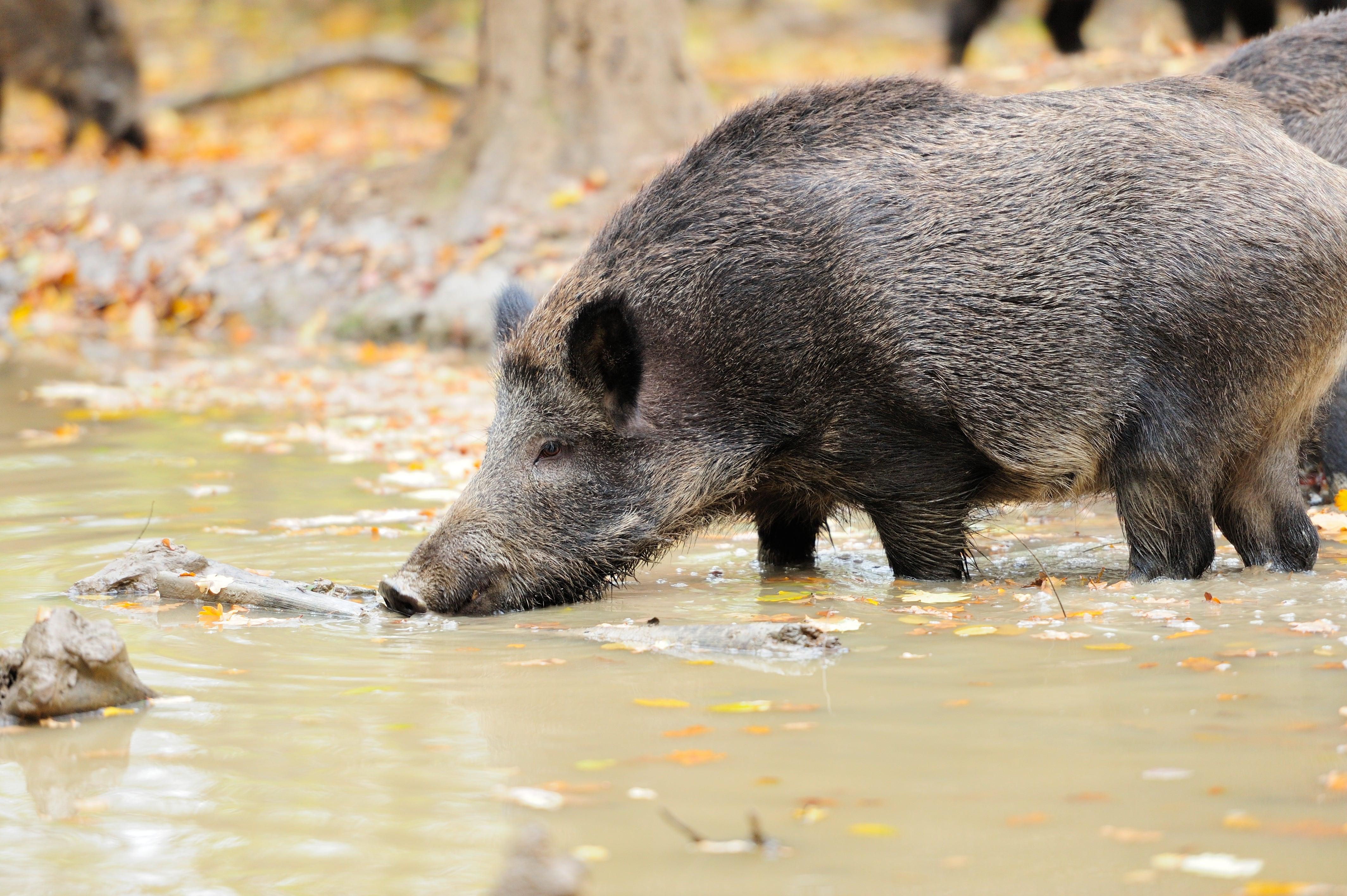Wild boar damage and the importance of management

El jabalí de la Península Ibérica es de tamaño pequeño en comparación con los ejemplares que se encuentran en el norte de Europa, pero aun así, no deja de ser un animal muy corpulento. Su pelaje varía según la región donde se encuentre, siendo predominantemente de color marrón oscuro, y posee grandes colmillos que varían según el ejemplar. En este blog te contamos cómo medir un trofeo de este mamífero.
La densidad de este animal en España supera el millón de ejemplares según datos del Instituto de Investigación de Recursos Cinegéticos. Esto se debe al mal manejo de la población por parte de los humanos y la falta de depredadores naturales. Solo los lobos se atreven a atacar a los animales jóvenes y enfermos cuando están solos y desamparados. El número de lobos aumenta constantemente y se les considera una verdadera plaga que es necesario controlar.
Apuntando a cultivos
The wild boar is an omnivorous animal that bases its diet on fungi, roots and above all agricultural products such as maize and wheat. This means that they need access to fields to feed and thus destroy everything in their path. They sniff, scavenge and roll over the produce, irreversibly destroying fields. Many farmers are desperately asking the Administration to stop this animal from roaming at will without any impact or control measures.
Some of the most affected regions are Galicia and Catalonia. In these regions, large herds of wild boar have been seen devastating cereal fields, despite the never-ending and insufficient efforts of hunters to reduce the number of wild boar.
Many proposed solutions have been put on the table, such as the chemical castration of wild boars, which would cause great damage to biodiversity. The introduction of aid for fencing off farms was also contemplated, but this is a utopian measure. The real solution that farmers are clamouring for is to increase the use of technology and to increase hunting in the face of the alarming decline in the numbers of some game species.

Traffic accidents on the increase
Wild boars are the animals that cause the most accidents, with 36% of accidents, followed by roe deer (26%) and dogs (20%) according to DGT data. This is a serious problem for road safety, as they abandon their natural habitat to approach urban areas in search of food. They also cause dangerous situations in rural areas, where the population has also multiplied. This leaves us with a staggering 80 injuries and extensive material damage in the last two years.

Fear of disease transmission in livestock farming
An animal that is not a predator does not have to frighten a livestock farmer, but many say they are more concerned than the wolf. Autonomous regions such as Andalusia have declared a hunting emergency. This is because the overpopulation of this mammal can cause the spread of swine fever, which affects domestic pigs. It is also a transmitter of diseases such as tuberculosis, brucellosis or trichinosis (transmissible in humans through the consumption of affected meat), these epidemics affecting all types of livestock such as cattle, goats and sheep.

Consequences in the urban environment
This entails great health and epidemiological risks as well as damage to the environment and the aforementioned traffic accidents. Many cities, such as Madrid and Barcelona, have experienced numerous scares in relation to this ungulate. Not only because of nuisance and alarm among neighbours, but also because of damage to urban furniture, parks and gardens. It is common to find them looking for food in rubbish bins, which can lead to their own intoxication.

What is the possible solution to this overpopulation problem?
Un estudio realizado por el Servicio de Ecopatología de la Fauna Silvestre de la Universitat Autònoma de Barcelona constató que no se trata tanto de cazar más como de cazar "mejor". Por mejor entendemos más selectivamente sobre determinadas clases de edad que tienen una mayor relevancia en la dinámica poblacional del jabalí.
Nos referimos a los menores de dos años, especialmente al sexo femenino. Esto se debe a que los individuos adultos de ambos sexos requieren más alimento y territorio que los jóvenes. Por lo tanto, la eliminación de una hembra adulta hará que las hembras subordinadas más jóvenes de la zona comiencen a reproducirse a una edad más temprana, lo que dará como resultado que nazca un mayor número de rayos.
Autora: María Balletbó